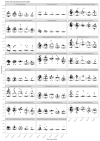GC-MS Techniques Investigating Potential Biomarkers of Dying in the Last Weeks with Lung Cancer
- PMID: 36675106
- PMCID: PMC9867309
- DOI: 10.3390/ijms24021591
GC-MS Techniques Investigating Potential Biomarkers of Dying in the Last Weeks with Lung Cancer
Abstract
Predicting when a patient with advanced cancer is dying is a challenge and currently no prognostic test is available. We hypothesised that a dying process from cancer is associated with metabolic changes and specifically with changes in volatile organic compounds (VOCs). We analysed urine from patients with lung cancer in the last weeks of life by headspace gas chromatography mass spectrometry. Urine was acidified or alkalinised before analysis. VOC changes in the last weeks of life were identified using univariate, multivariate and linear regression analysis; 12 VOCs increased (11 from the acid dataset, 2 from the alkali dataset) and 25 VOCs decreased (23 from the acid dataset and 3 from the alkali dataset). A Cox Lasso prediction model using 8 VOCs predicted dying with an AUC of 0.77, 0.78 and 0.85 at 30, 20 and 10 days and stratified patients into a low (median 10 days), medium (median 50 days) or high risk of survival. Our data supports the hypothesis there are specific metabolic changes associated with the dying. The VOCs identified are potential biomarkers of dying in lung cancer and could be used as a tool to provide additional prognostic information to inform expert clinician judgement and subsequent decision making.
Keywords: GC-MS; SPME; VOCs; biomarkers; dying; lung cancer; palliative; urine; volatile.
Conflict of interest statement
The authors declare no conflict of interest.
Figures





References
-
- Neuberger J. More Care, Less Pathway: A Review of the Liverpool Care Pathway. Department of Health; London, UK: 2013.
-
- Reid V.L., McDonald R., Nwosu A.C., Mason S.R., Probert C., Ellershaw J.E., Coyle S. A systematically structured review of biomarkers of dying in cancer patients in the last months of life; An exploration of the biology of dying. PLoS ONE. 2017;12:e0175123. doi: 10.1371/journal.pone.0175123. - DOI - PMC - PubMed
MeSH terms
Substances
Grants and funding
LinkOut - more resources
Full Text Sources
Other Literature Sources
Medical
Miscellaneous

